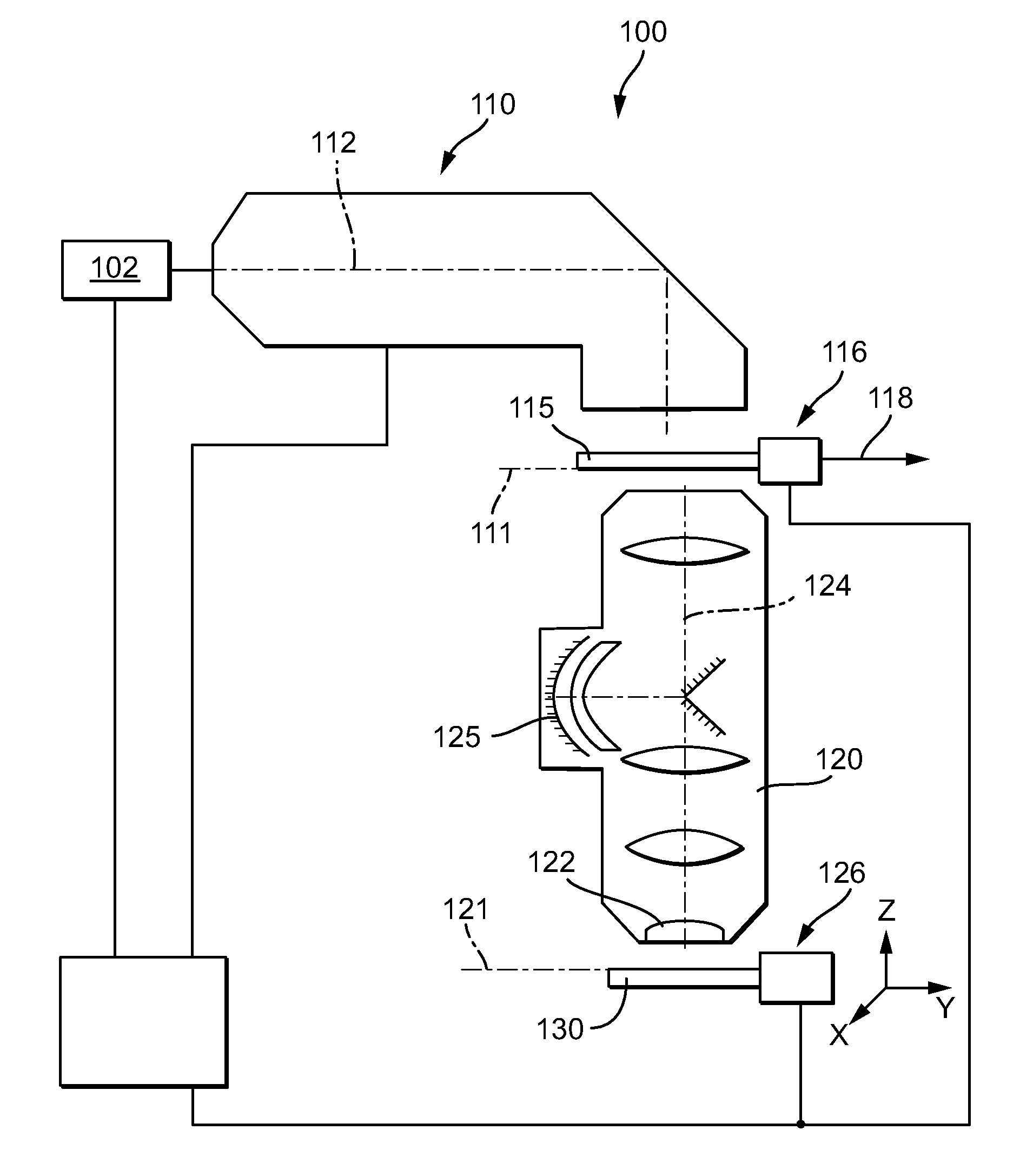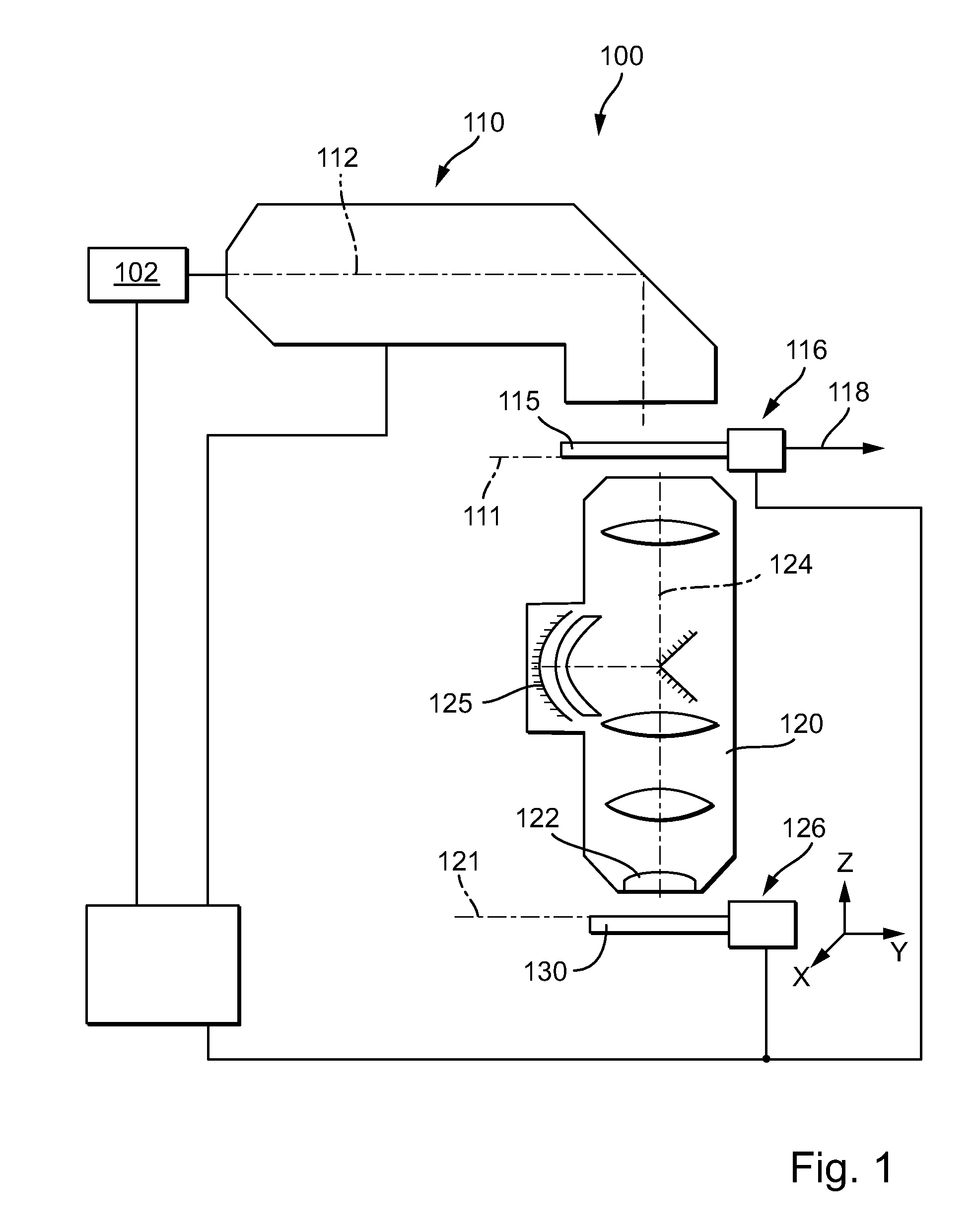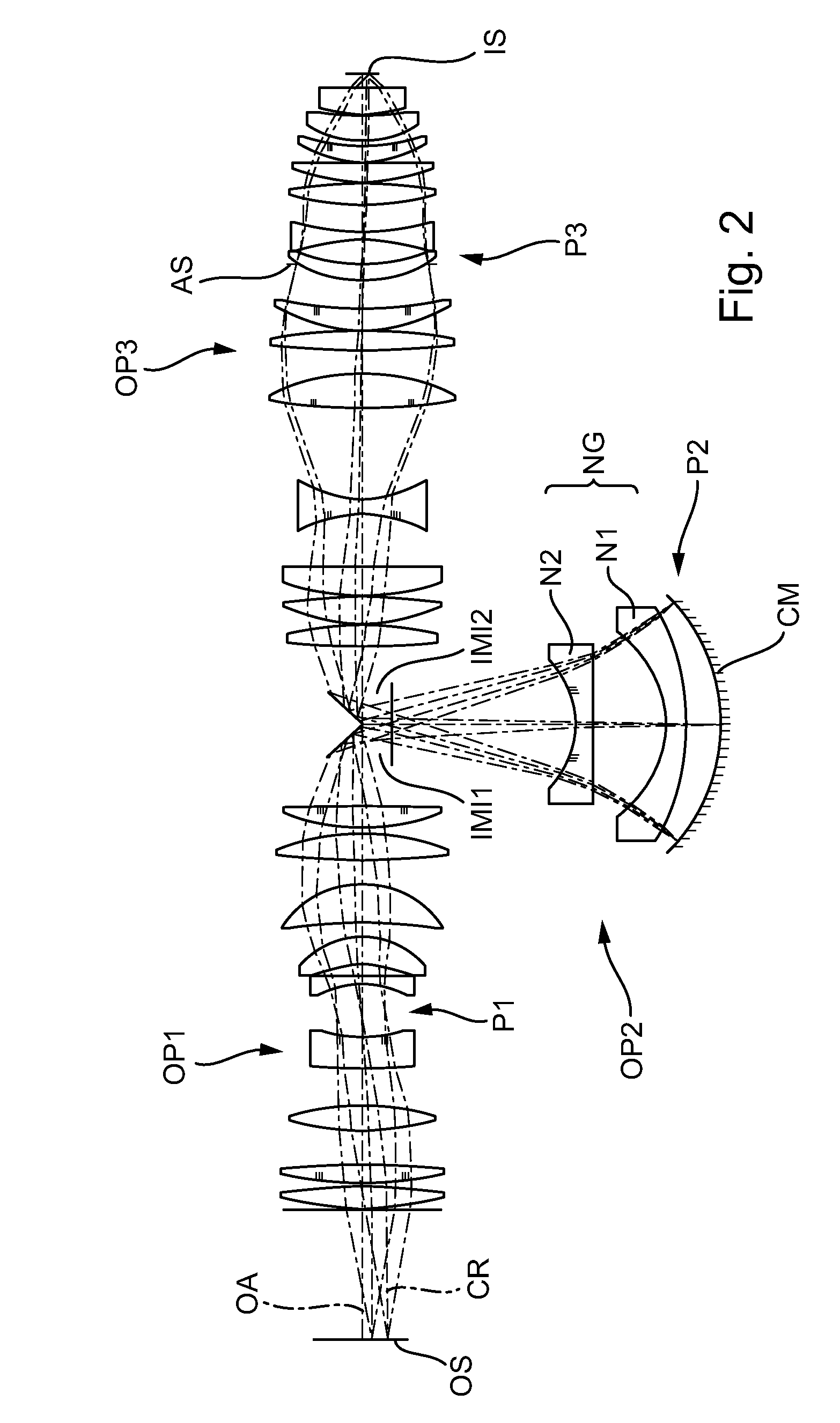Projection exposure apparatus, projection exposure method and projection objective
a technology of projection exposure and projection objective, which is applied in the direction of photomechanical treatment, printing, instruments, etc., can solve the problems of difficult to correct chromatic aberrations using purely refractive means in this wavelength range, and few sufficient transparent materials available for producing transparent optical elements, etc., and achieves narrow quality tolerances and production economics.
- Summary
- Abstract
- Description
- Claims
- Application Information
AI Technical Summary
Benefits of technology
Problems solved by technology
Method used
Image
Examples
Embodiment Construction
[0037]In the following description of preferred embodiments, the term “optical axis” denotes a straight line or a sequence of straight line segments through the centers of curvature of the optical components. The optical axis is folded at folding mirrors (deflection mirrors) or other reflective surfaces. In the examples, the object is a mask (reticle) having the pattern of an integrated circuit; a different pattern, for example of a grating, may also be involved. In the examples, the image is projected onto a wafer which is provided with a photoresist layer and which serves as a substrate. Other substrates, for example elements for liquid crystal displays or substrates for optical gratings, are also possible.
[0038]The specifications of the exemplary embodiments shown in the figures of the drawings are specified in tables, the numbering of which respectively corresponds to the numbering of the corresponding figure of the drawings.
[0039]FIG. 1 schematically shows a microlithography pr...
PUM
 Login to View More
Login to View More Abstract
Description
Claims
Application Information
 Login to View More
Login to View More - R&D
- Intellectual Property
- Life Sciences
- Materials
- Tech Scout
- Unparalleled Data Quality
- Higher Quality Content
- 60% Fewer Hallucinations
Browse by: Latest US Patents, China's latest patents, Technical Efficacy Thesaurus, Application Domain, Technology Topic, Popular Technical Reports.
© 2025 PatSnap. All rights reserved.Legal|Privacy policy|Modern Slavery Act Transparency Statement|Sitemap|About US| Contact US: help@patsnap.com



